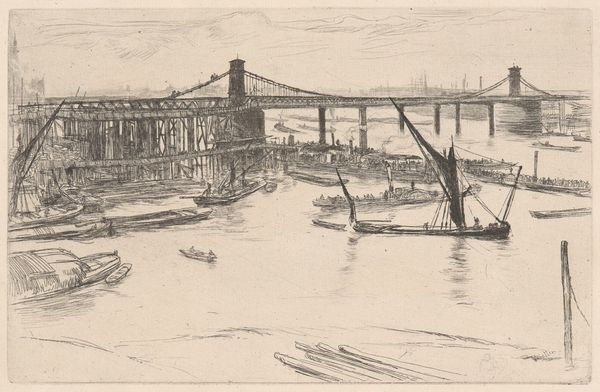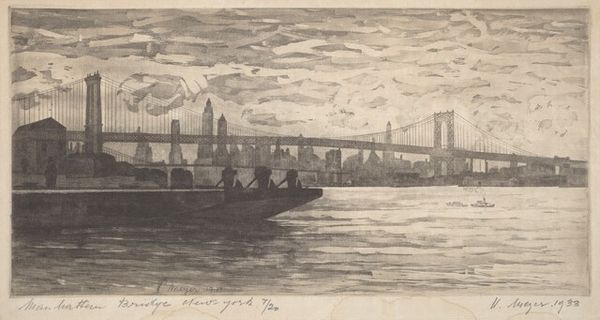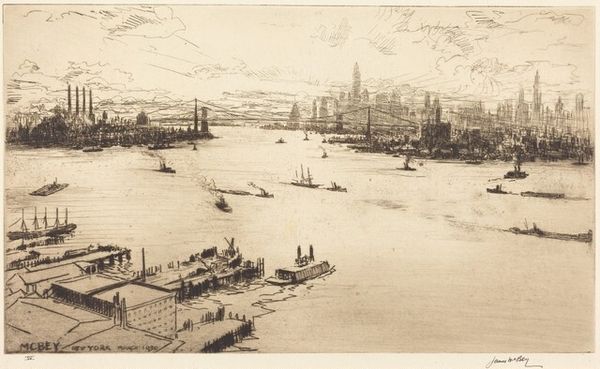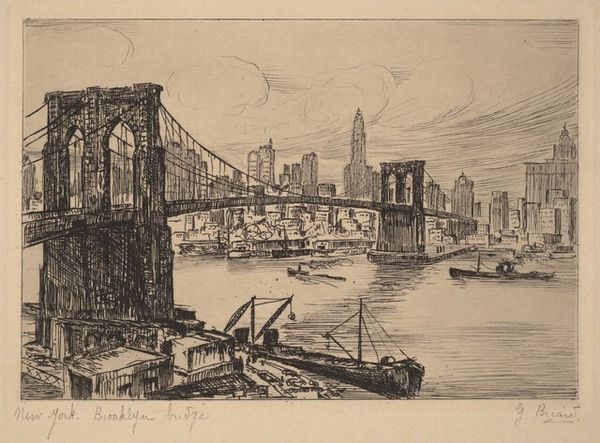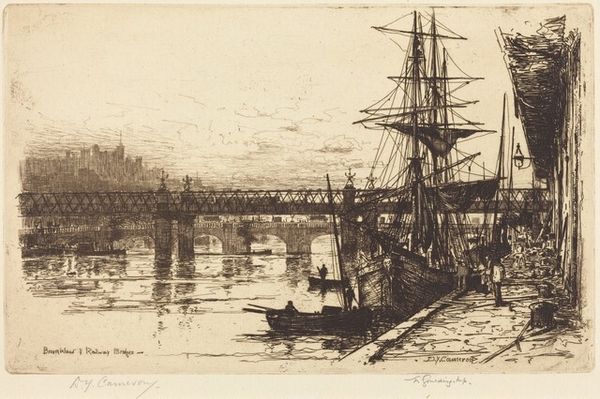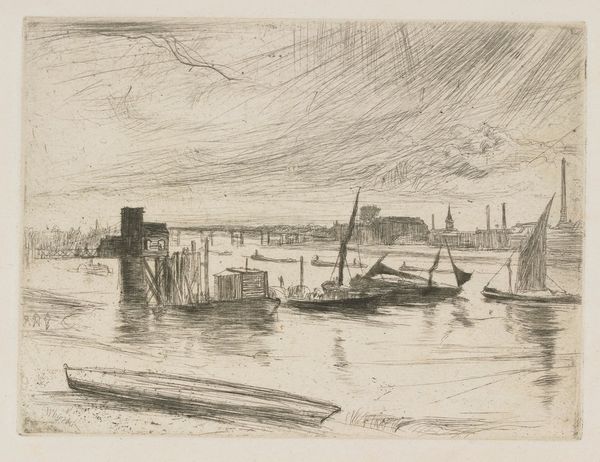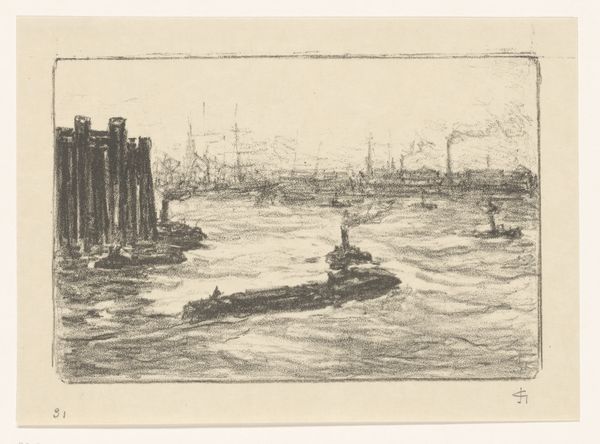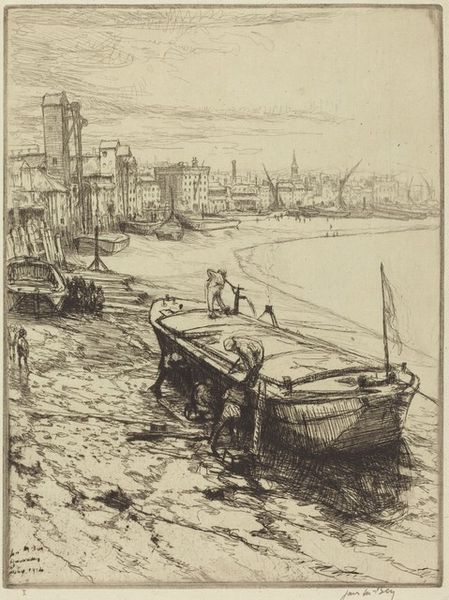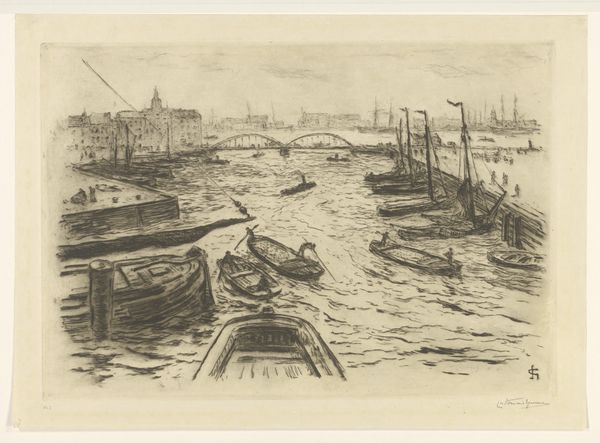
Dimensions: plate: 13.8 Ã 21.2 cm (5 7/16 Ã 8 3/8 in.) sheet: 17.7 Ã 23.3 cm (6 15/16 Ã 9 3/16 in.)
Copyright: CC0 1.0
Curator: This is James Abbott McNeill Whistler's etching, "Old Hungerford Bridge," housed here at the Harvard Art Museums. Whistler, born in 1834, captures a moment of immense change in London's infrastructure. Editor: It's all misty atmosphere and skeletal architecture! The bridge feels like a caged beast, and those boats are ghosts gliding through the water. So evocative. Curator: Indeed. Whistler was fascinated with depicting modern industrialization. Hungerford Bridge, built in 1845, was part of that transformation—linking people and goods across the Thames. Editor: There's such a fragile beauty to it, though. All those delicate lines...almost like he's weaving a memory, not just documenting a structure. It's about the feeling of the city, not just the facts. Curator: Whistler was criticized for romanticizing industry. He faced many accusations that his art served no real social purpose. Editor: And I guess Whistler’s defense would be that it’s supposed to be felt, to create feeling. That's enough, isn't it? Curator: I think that's certainly what Whistler wanted us to think. Editor: Well, he succeeded, at least for me! What a ghostly masterpiece.
Comments
No comments
Be the first to comment and join the conversation on the ultimate creative platform.
